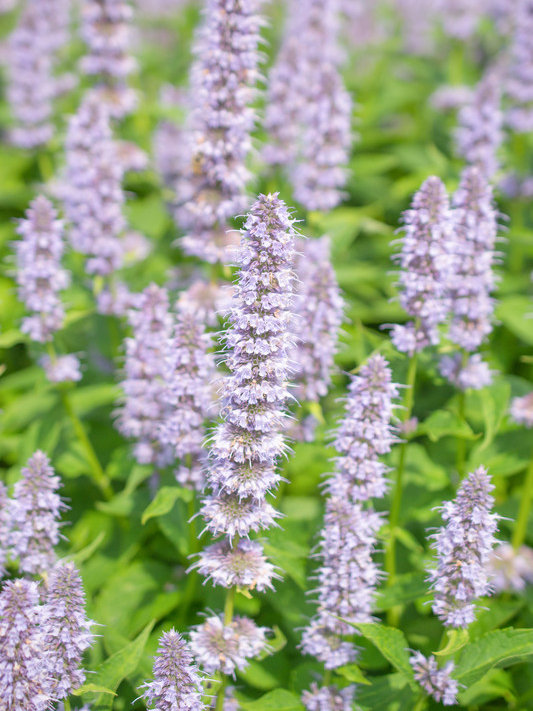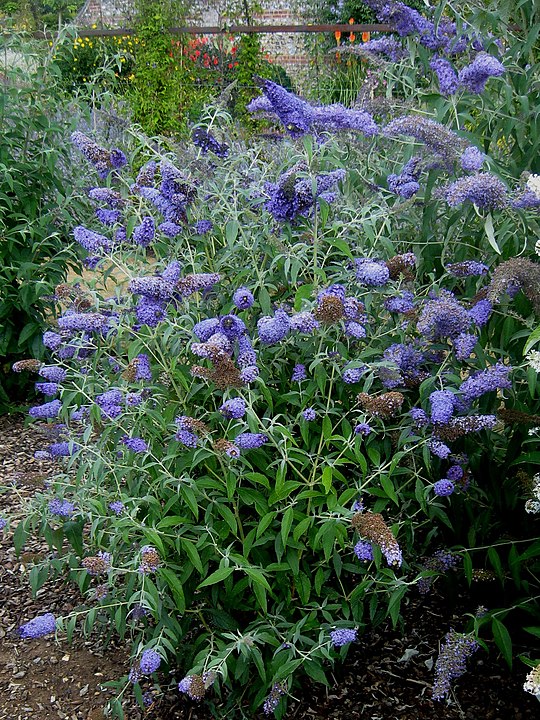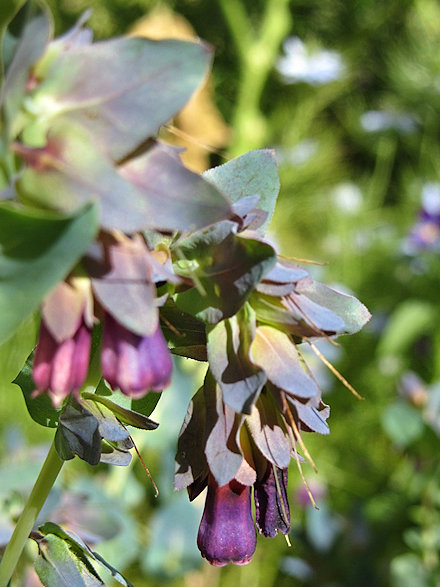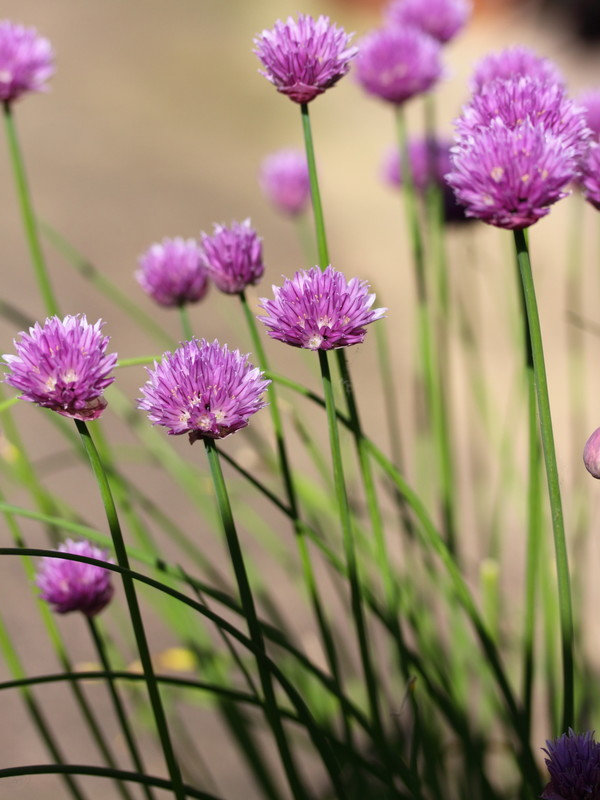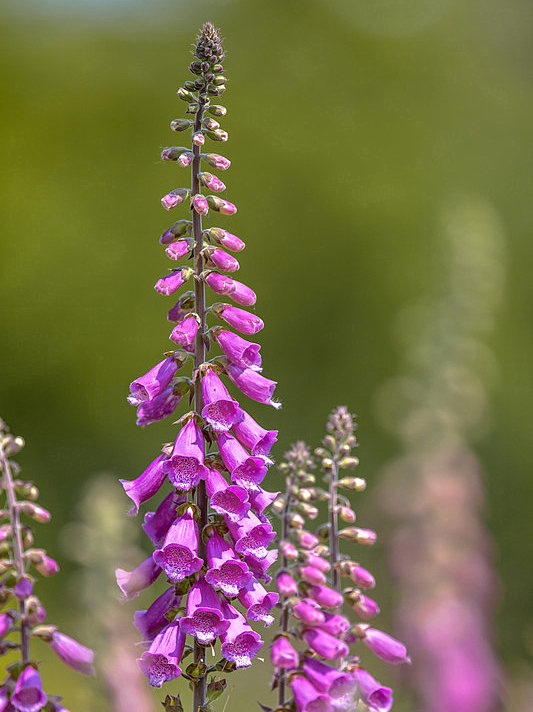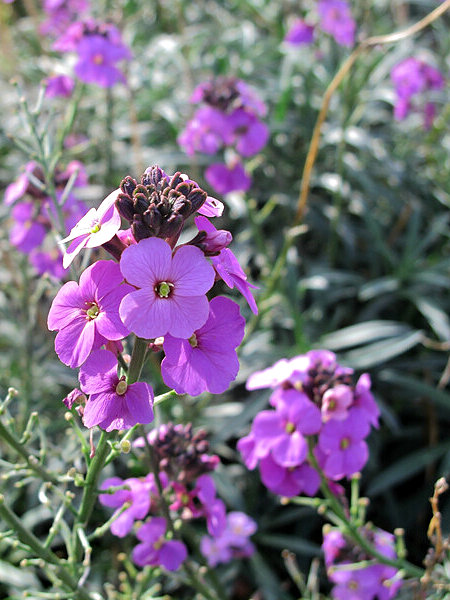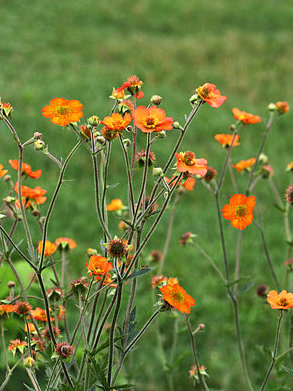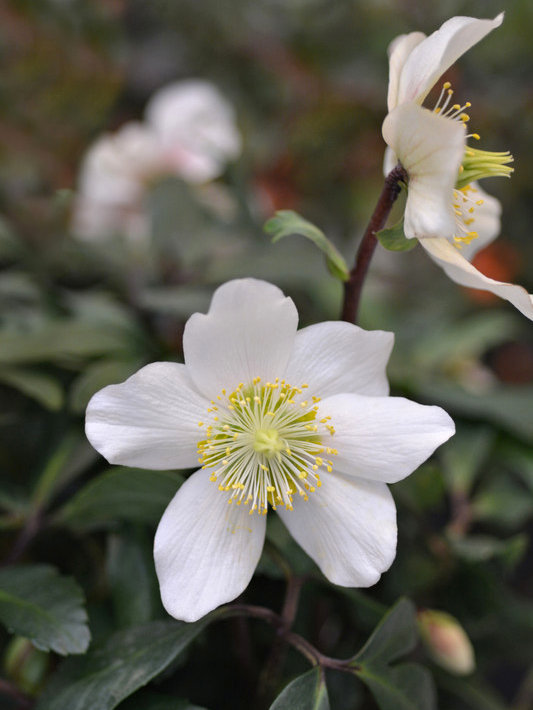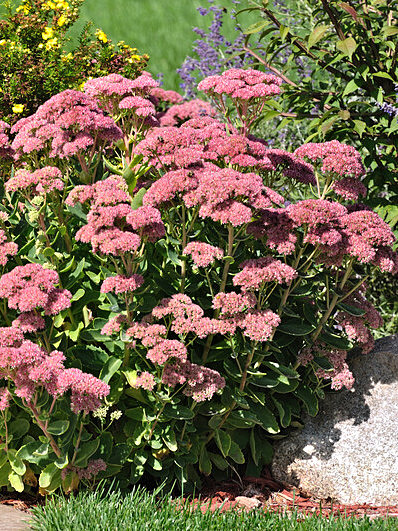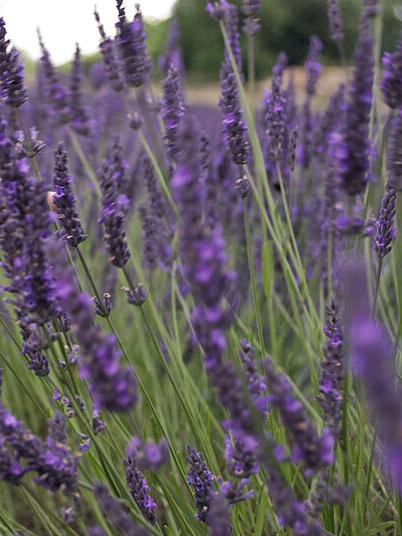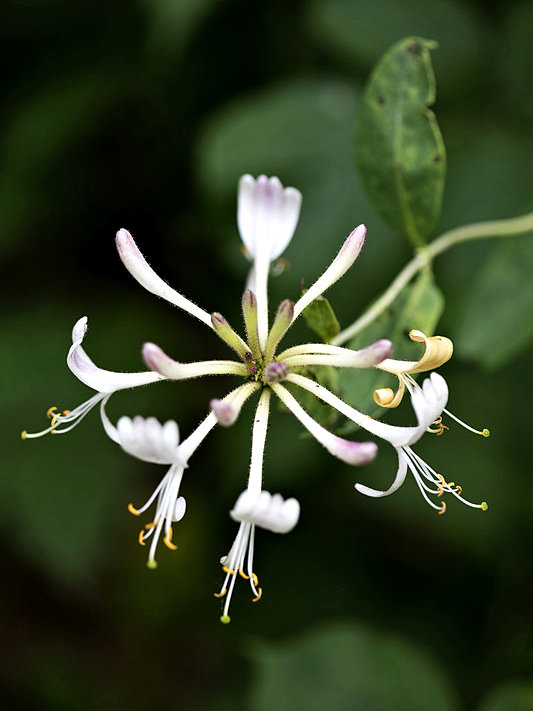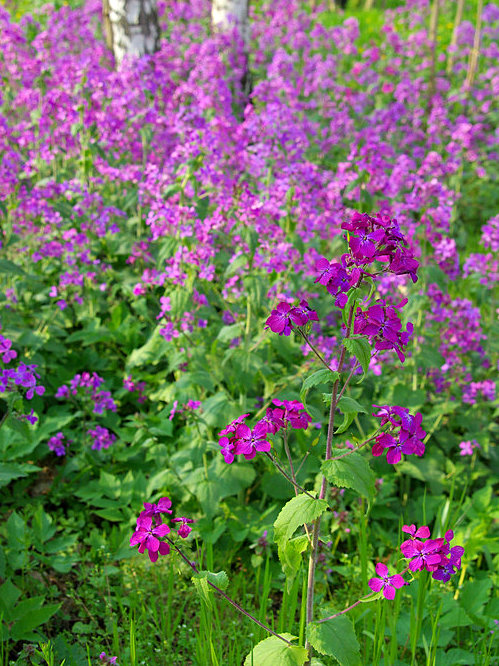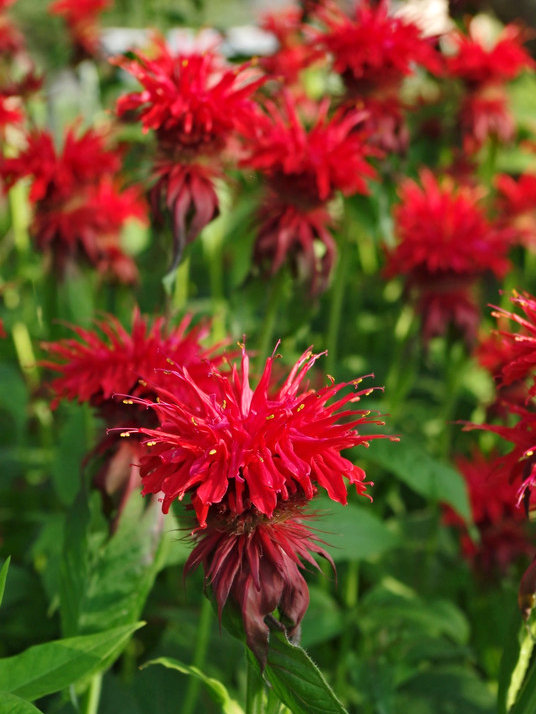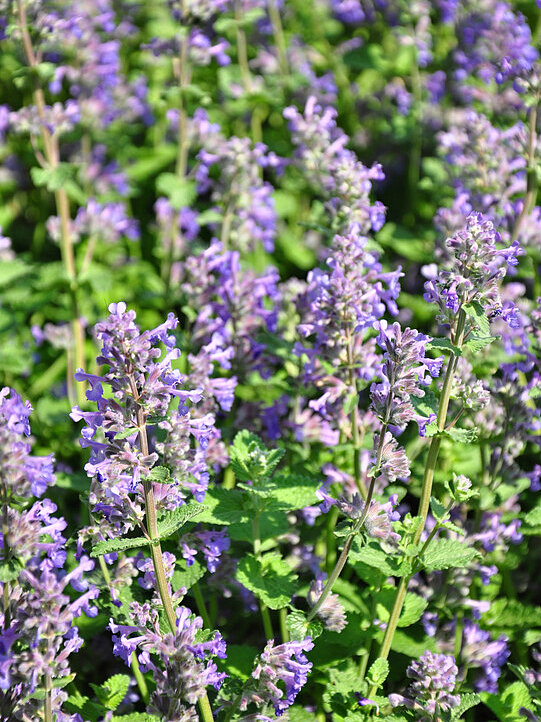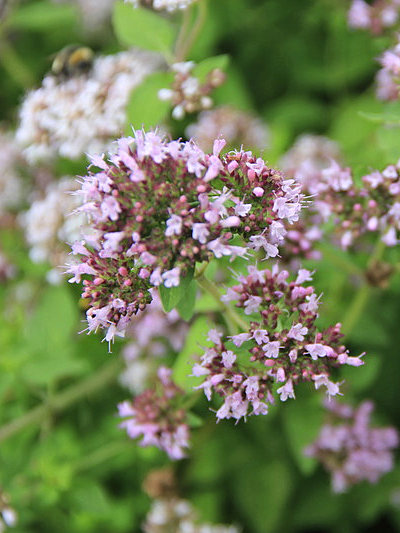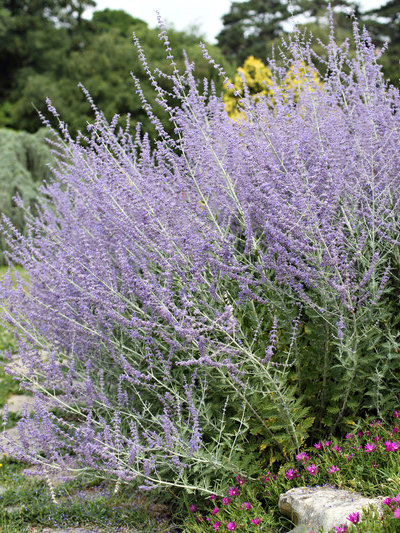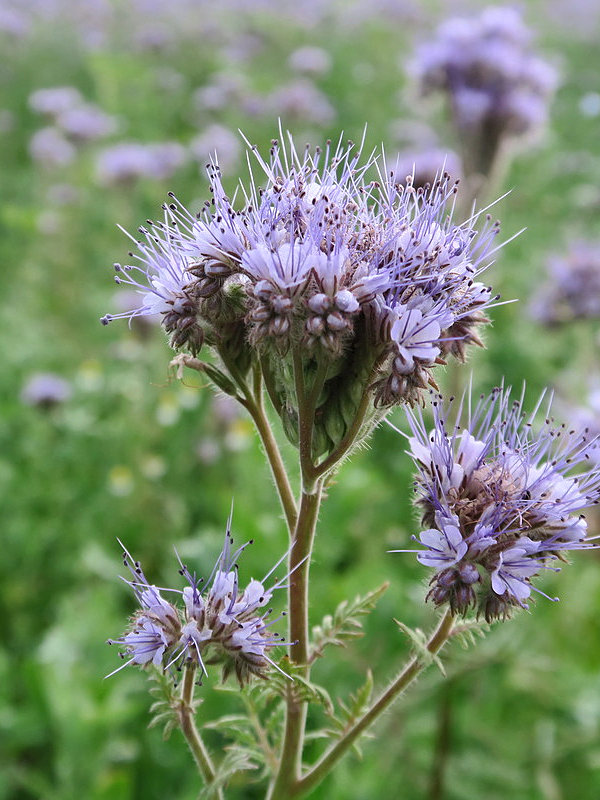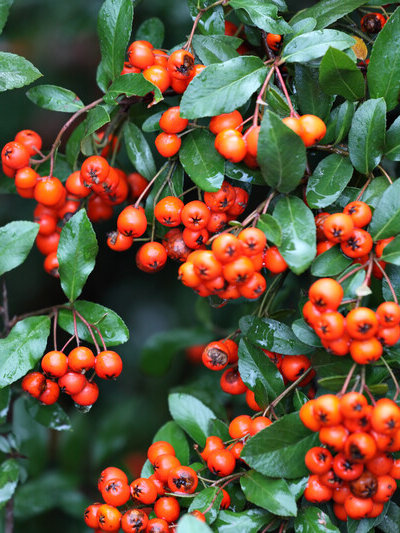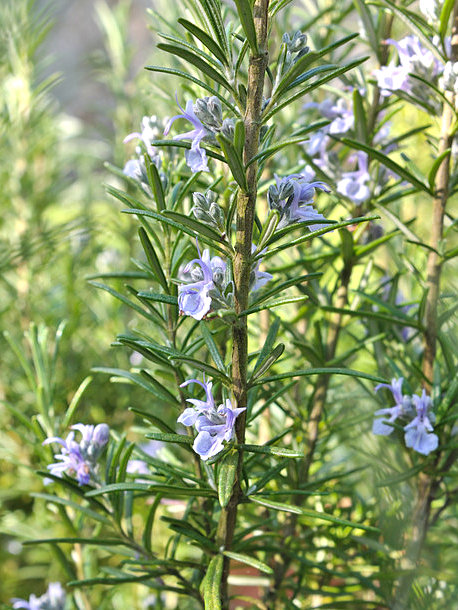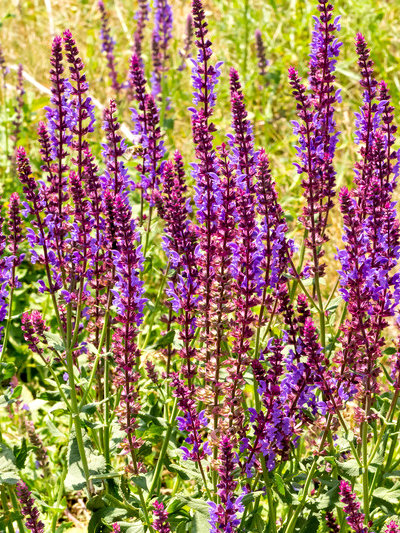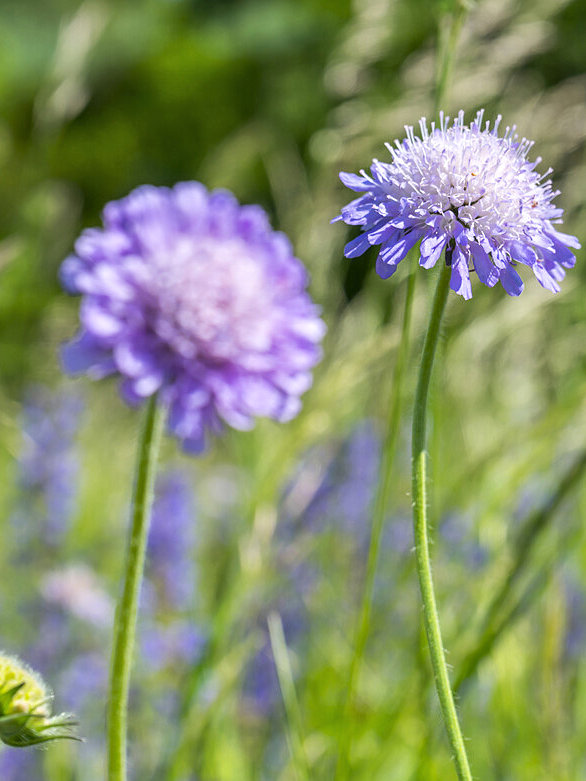Many plants are described as attracting bees or even being 'Perfect for Pollinators'.
However, we have found that the attraction varies enormously. Some only seem to get the
odd visitor.
Below are some plants we have found to be virtual bee or butterfly 'magnets'. Have as many of these as your space and conditions allow. We try to make these our 'power' plants, which are plants that perform well/ for a long time - so are repeated at intervals throughout the garden to pull the design together.
Note how clearl ybees are particularly attracted to purple/ mauve/ violet.
Below are some plants we have found to be virtual bee or butterfly 'magnets'. Have as many of these as your space and conditions allow. We try to make these our 'power' plants, which are plants that perform well/ for a long time - so are repeated at intervals throughout the garden to pull the design together.
Note how clearl ybees are particularly attracted to purple/ mauve/ violet.
Agastache Blue Fortune (Giant hyssop)
Buddleja Buzz (Butterfly plant)
Agastache Blue Fortune (Giant hyssop) - sun - well-drained, fertile soil - flowers
July to early September
Borderline hardy but seems fine in the South
Are various agastache's - various heights and flower colour. This one may be a little tall at 1m and untidy, until it flowers, but, certainly a bee 'magnet'
Borderline hardy but seems fine in the South
Are various agastache's - various heights and flower colour. This one may be a little tall at 1m and untidy, until it flowers, but, certainly a bee 'magnet'
Buddleja Buzz (Butterfly plant) - one of the more compact we've grown.
Deciduous shrub which butterflies love.
'Buzz' series comes in purple, blue, pink and white. Quite fast growing, up to 120cm tall (about half that in a container).
Prefers sun, as do the butterflies, but will tolerate partial shade.
'Buzz' series comes in purple, blue, pink and white. Quite fast growing, up to 120cm tall (about half that in a container).
Prefers sun, as do the butterflies, but will tolerate partial shade.
Cerinthe major ‘Purpurascens’ (Honeywort)
Chive (garlic)/ Allium
Cerinthe major ‘Purpurascens’ (Honeywort) - sun - well-drained - flowers May to
August - 0.6M
Allegedly half-hardy annual but in the South ours self-sow freely year after year.
Perhaps slightly untidy but very easy to grow (also easy to remove) and bees can't get enough of this plant.
Allegedly half-hardy annual but in the South ours self-sow freely year after year.
Perhaps slightly untidy but very easy to grow (also easy to remove) and bees can't get enough of this plant.
Chives (garlic) - sun or partial shade - 45cm - a member of the Allium family
We have always grown Alliums rather than Chives, and would describe Alliums as pollinator-friendly rather than magnets. However, they do flower earlier than many plants.
Other sources cite Chives as a bee-magnet - so, next season for us.
We have always grown Alliums rather than Chives, and would describe Alliums as pollinator-friendly rather than magnets. However, they do flower earlier than many plants.
Other sources cite Chives as a bee-magnet - so, next season for us.
Digitalis (Foxglove)
Erysimum (Wallflower - Bowles mauve)
Digitalis (Foxglove) - several colours - 2M - biennial (flowers in second year) -
sun to partial shade
Humous-rich soil (we fid it grows anywhere).
Bees love it. Unusual as quite early flowering and happy in partial shade.
Plant low perennials in front to hide unruly leaves.
Humous-rich soil (we fid it grows anywhere).
Bees love it. Unusual as quite early flowering and happy in partial shade.
Plant low perennials in front to hide unruly leaves.
Erysimum (Wallflower - Bowles mauve) - semi-perennial - full sun - well-drained,
not acidic, not overly fertilised soil - flowers Feb to July - 0.75M.
This doesn't quite fall into the 'magnet' category but is early to flower and easy to propagate from cuttings.
Ours seem to be held back by our slighlty acidic soil.
This doesn't quite fall into the 'magnet' category but is early to flower and easy to propagate from cuttings.
Ours seem to be held back by our slighlty acidic soil.
Geum Tangerine (Avens)
Helleborus - (Hellebore)
Geum Tangerine (Avens) - sun, well-drained - flowers June to Aug - 0.6M
Down in the South it flowers earlier; must be dead-headed to keep flowering
Not all are good for bees but this one is, albeit not really 'magnet'.
Nice, colourful, early-season flower.
Down in the South it flowers earlier; must be dead-headed to keep flowering
Not all are good for bees but this one is, albeit not really 'magnet'.
Nice, colourful, early-season flower.
Helleborus (Hellebore) - semi-evergreen - partial shade - well-draining but not acid
soil; fertilise well - flowers Dec to April - 0.4M
A good option for early flying bees - unusual as grows under deciduos trees and its winter flowering.
Serves a specific purpose when few plants are flowering.
A good option for early flying bees - unusual as grows under deciduos trees and its winter flowering.
Serves a specific purpose when few plants are flowering.
Hylotelephium spectabile (Stonecrop)
Lavandula × intermedia (Lavender - Gros Bleu)
Hylotelephium spectabile (Stonecrop) - well-drained, not acidic soil - flowers August
to Sept- 45cm
Alledgedly needs sun but ours are fine in quite shady areas.
Bees love, even before flowers fully open.
Alledgedly needs sun but ours are fine in quite shady areas.
Bees love, even before flowers fully open.
Lavandula x intermedia ‘Gros Bleu’- evergreen shrub - sun, well-drained neutral or alkaline
soil - 0.75M - flowers July - August.
Can sort of cope with acid soil. Use as a hedge or in the garden.
Not all Lavenders attract bees equally; Gros Blue best; Edelweiss (white) 2nd and Sussex third best. [link to study]
Can sort of cope with acid soil. Use as a hedge or in the garden.
Not all Lavenders attract bees equally; Gros Blue best; Edelweiss (white) 2nd and Sussex third best. [link to study]
Lonicera periclymenum (Honeysuckle)
Lunaria annua (Honesty)
Lonicera periclymenum (Honeysuckle) - native deciduous climber - sun or partial shade -
well-drained, moist, humus-rich - flowers June to Sept - 3M
Varieties differ in colour and size.
Not quite a 'bee magnet' but a plus is that birds will nest in an established plant.
Varieties differ in colour and size.
Not quite a 'bee magnet' but a plus is that birds will nest in an established plant.
Lunaria annua (Honesty) - hardy biennial (flowers in second year) - sun or partial
shade - moist but well-drained (ours aren't at all fussy) - flowers May - June
- 0.9M.
Easy to grow, often self-seeds. Three colours - mauve, white and blue.
Mauve seems best for bees. Orange-tip butterflies lay eggs on it but larvae rarely survive unfortunately.
Easy to grow, often self-seeds. Three colours - mauve, white and blue.
Mauve seems best for bees. Orange-tip butterflies lay eggs on it but larvae rarely survive unfortunately.
Mahonia (Oregon grape)
Monarda (Bee balm)
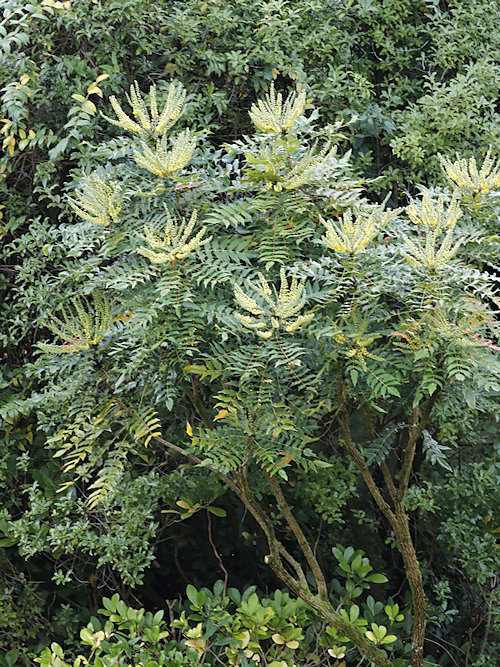
Mahonia (Oregon grape) - evergreen shrub - sun or partial shade - vary in height - 1M
to 5M - most varieties flower Nov to Mar - moderately fertile, moist, well-drained soil
Bees appreciate the winter flowers, (as do our Blue Tits).
Despite some advice to the contrary, seem amenable to pruning.
Bees appreciate the winter flowers, (as do our Blue Tits).
Despite some advice to the contrary, seem amenable to pruning.
Monarda (Bee balm) - sun or partial shade - moist, fertile, well-drained soil -
flowers July to Sept - 0.9M
A range of pinks and reds.
A new plant we are about to try. Apparently for both bees and butterfiles but need to choose a variety that is mildew resistant.
A range of pinks and reds.
A new plant we are about to try. Apparently for both bees and butterfiles but need to choose a variety that is mildew resistant.
Nepeta × faassenii (Catmint)
Oregano vulgare (Marjoram)
Nepeta × faassenii (Catmint) - sun or partial shade - moist, well-drained - flowers
June to Sept - 0.6M.
Cut slightly after first flowers to encourage second bloom and cut to ground late Autumn to keep compact.
Somewhat lax growth and cats will flatten it but bees do love it.
Cut slightly after first flowers to encourage second bloom and cut to ground late Autumn to keep compact.
Somewhat lax growth and cats will flatten it but bees do love it.
Oregano vulgare (Marjoram) - deciduous bushy herb - sun or partial shade - well-drained
- flowers July to Sept - 0.6M - yellow form is available.
wild and untidy but both bees and butterflies love it plus can use for cooking
Try to plant in an out-of-the-way patch or part of herb garden.
wild and untidy but both bees and butterflies love it plus can use for cooking
Try to plant in an out-of-the-way patch or part of herb garden.
Perovskia (Russian sage)
Phacelia tanacetifolia (Fiddleneck)
Perovskia 'Blue Spire' (Russian sage) - to 1.2m, likes full sun in well-drained
soil. Do not fertilise as leads to lanky growth. Plant several together
for maximum impact.
Flowers August and September. Don't then cut back as silvery spires give winter interest. Prune in Spring but read up first, pruning too near base will kill the plant,
Flowers August and September. Don't then cut back as silvery spires give winter interest. Prune in Spring but read up first, pruning too near base will kill the plant,
Phacelia tanacetifolia (Fiddleneck) - hardy annual - sun - fertile, well-drained
soil - flowers June to September - 1M.
An easy to grow (can sow direct in Autumn or undercover in Spring).
An under-rated plant which bees love.
An easy to grow (can sow direct in Autumn or undercover in Spring).
An under-rated plant which bees love.
Pyracantha (Firethorn)
Rosmarinus officinalis (Rosemary)
Pyracantha (Firethorn - evergreen - to 3M - red, orange or yellow berries
in Autumn - flowers (June) attract bees and birds eat the berries
Full sun to partial shade, well-drained and fertile soil
Prickly - good for a hedge, against a wall or as a shrub - able to be pruned/ trained.
Full sun to partial shade, well-drained and fertile soil
Prickly - good for a hedge, against a wall or as a shrub - able to be pruned/ trained.
Rosmarinus officinalis (Rosemary) - evergreen herb shrub - sun - moist, well-drained
- variable flowering time - 1.2M
In the RHS 'Perfect for Pollinators' list but we certainly wouldn't describe it as a 'magnet'.
Obviously good for the herb garden.
In the RHS 'Perfect for Pollinators' list but we certainly wouldn't describe it as a 'magnet'.
Obviously good for the herb garden.
Salvia nemorosa
Scabious
Salvia nemorosa (Balkan clary) - several colours - purple/ reddish/ pink/ white
Full sun, moist but well-drained - to 60cm. Flowers June to October. Very easy to grow and take cutttings.
In truth flowers only look good for two months but still attract bees when looking well past it. Consider the 'Chelsea Chop'.
Full sun, moist but well-drained - to 60cm. Flowers June to October. Very easy to grow and take cutttings.
In truth flowers only look good for two months but still attract bees when looking well past it. Consider the 'Chelsea Chop'.
Scabious - varieties in differing heights and colours (black, red, blue
mauve).
Can be tall and lanky or compact, (try 'Butterfly Blue pin-cushion'; flowers July to Sept - well-drained but not acidic soil - 0.4M)
Bees and butterflies love whichever variety you choose although may overlook the smallest ones.
Can be tall and lanky or compact, (try 'Butterfly Blue pin-cushion'; flowers July to Sept - well-drained but not acidic soil - 0.4M)
Bees and butterflies love whichever variety you choose although may overlook the smallest ones.

